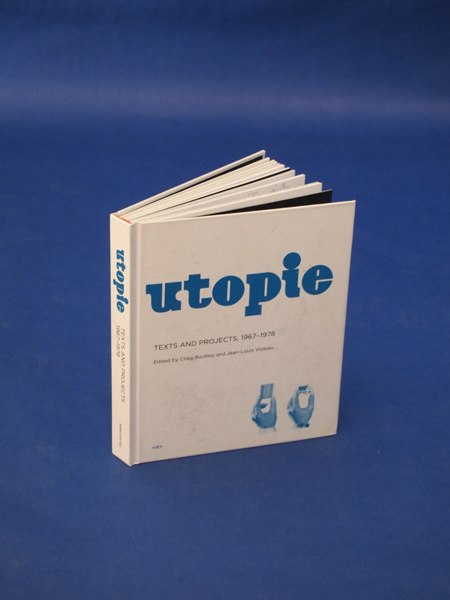![]() body | color | collections | commodity | cube | document | fabric | fetish | gender | glass | home | identity | living | machine | metal | minimal | mobility | narrative | olfactory | organic |
body | color | collections | commodity | cube | document | fabric | fetish | gender | glass | home | identity | living | machine | metal | minimal | mobility | narrative | olfactory | organic |
![]() pain | paper | plastic | plugs | power | protective | rectangular | ritual | round | sound | souvenir | spiritual | style | text-based | time | tool | touch | uniform | value | visual | warm | wood
pain | paper | plastic | plugs | power | protective | rectangular | ritual | round | sound | souvenir | spiritual | style | text-based | time | tool | touch | uniform | value | visual | warm | wood
| Book: Utopie - Texts and Projects, 1967-1978 | |||
Narrative: Utopie: Texts and Projects, 1967-1978. Edited by Craig Buckley and Jean-Louis Violeau, Publisher: Semiotext(e) Printed in USA Color printing inks are made primarily with linseed oil, soybean oil, or a heavy petroleum distillate as the solvent combined with organic pigments. The pigments are made up of salts of multiring nitrogen-containing compounds (dyes), such as yellow lake, peacock blue, phthalocyanine green, and diarylide orange. Inorganic pigments also are used in printing inks to a lesser extent. Some examples are chrome green (Cr2O3), Prussian blue (Fe4[Fe(CN)6]3), cadmium yellow (CdS), and molybdate orange (a mix of lead chromate, molybdate, and sulfate). Black ink is made using carbon black. White pigments, such as titanium dioxide, are used either by themselves or to adjust characteristics of color inks. Inks also contain additives such as waxes, lubricants, surfactants, and drying agents to aid printing and to impart any special characteristics. Printing ink is a $10 billion global industry. The paper was made from pulp obtained by chemical means, known as kraft pulping. Chips of wood were placed in a large, sealed container known as a digester. The digester contained a strongly alkaline solution of sodium hydroxide and sodium sulfide. Bleaching removes lignin and involves mixing the pulp with a series of oxidizing chemicals that react with the lignin. After each mixture, the pulp was washed with an alkaline solution that removes the treated lignin. Fillers were added to the pulp. (A typical filler is a clay known as kaolin. Other chemicals often added to pulp include starches or gums. Rosin and alum are often added as sizers, making the paper less absorbent.) Pulp was added to water to form slurry in order to make paper with an even density. The short-lived grouping of architects, sociologists, and urbanists known as Utopie, active in Paris from 1967 to 1978, was the product of several factors: the student protests for the reform of architectural education, the unprecedented expansion and replanning of the Parisian urban fabric carried out by the government of Charles de Gaulle, and the domestication of military and industrial technologies by an emerging consumer society. The group's collaborative publications included the work of Jean Aubert, Isabelle Auricoste, Jean Baudrillard, Catherine Cot, Charles Goldblum, Jean-Paul Jungmann, Henri Lefebvre, René Lourau, Antoine Stinco, and Hubert Tonka. Offering a militant alternative to professional urban planning journals, these writers not only formulated a critique of the technocratic and administrative rule over a disabled and alienated urban society but also projected an ephemeral urban poetics. With ties to the Ecole Nationale Supérieure des Beaux-Arts (ENSBA) in central Paris and to the sociology department established by Henri Lefebvre at the suburban campus of Nanterre, the group challenged postwar modernization and urban planning and questioned the roles into which architects, sociologists, and urban planners had been cast. |
 |
||
![]()
